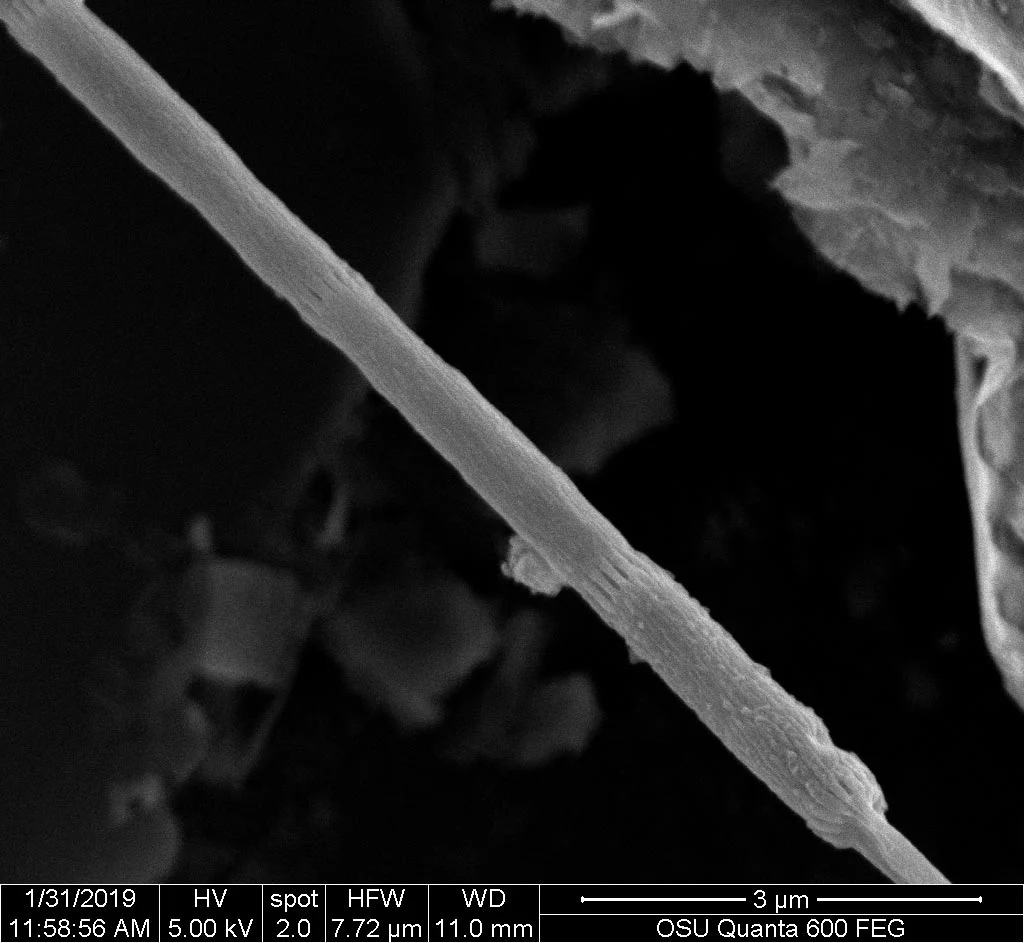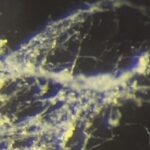Rug of biomass. Credit: Oregon State University
A Shocking Discovery Beneath the Mud
In the brackish mudflats of Oregon’s Yaquina Bay, scientists have uncovered a microscopic marvel: a new species of bacteria that behaves like living electrical wires. Named Candidatus Electrothrix yaqonensis in honour of the indigenous Yaquina people, this bacterium challenges our understanding of microbial life and its capabilities. DailySciTech
The Living Wire: How It Works
Unlike typical bacteria, Ca. Electrothrix yaqonensis forms long filaments by connecting rod-shaped cells end-to-end, sharing an outer membrane. This structure allows electrons generated from sulfide oxidation in deeper sediment layers to travel along the filament to surface layers, where they are released to oxygen or nitrate. Essentially, these bacteria create natural electrical circuits within the sediment.
Unique Features Set It Apart
This newly discovered species exhibits distinct characteristics:
- Thicker Surface Ridges: The bacterium’s outer shell features ridges averaging about 228 nanometers in thickness, arranged in a spiral pattern, which is up to three times thicker than those in previously known species.
- Protective Sheath: A transparent, non-conductive sheath surrounds the filament, a feature not observed in other cable bacteria, potentially offering protection from environmental factors.
- Nickel-Centered Conductive Fibers: Inside the ridges lies a fiber containing a nickel-centered metal complex, efficiently transporting electrons along the filament, functioning as a “biological wire.” DailySciTech

Filament of new cable bacteria species. Credit: Cheng Li
Genetic Mosaicism: A Blend of Lineages
Genomic analysis reveals that Ca. Electrothrix yaqonensis possesses genetic features from both known cable bacteria genera: Candidatus Electrothrix (saltwater) and Candidatus Electronema (freshwater). This mosaicism includes a unique cytochrome with two hemes, differing from the single heme typically found in its genus. Additionally, it adapts to fluctuating salinity using sodium-proton exchange proteins instead of the usual NQR enzyme, showcasing its versatility in diverse environments. DailySciTech
Potential Applications: Bioelectronics and Beyond
The discovery of Ca. Electrothrix yaqonensis opens doors to numerous applications:
- Bioelectronics: Its efficient electron transport system could inspire the development of biodegradable electronic devices and biosensors. DailySciTech
- Environmental Remediation: The bacterium’s ability to conduct electricity might be harnessed to remove heavy metals and organic pollutants from sediments.
- Scientific Insight: Studying this organism could provide deeper understanding of microbial evolution and electron transport mechanisms. DailySciTech
Reference: “A novel cable bacteria species with a distinct morphology and genomic potential” by Anwar Hiralal, Philip Ley, Jesper R. van Dijk, Cheng Li, Dmitrii Pankratov, Jiji Alingapoyil Choyikutty, Galina Pankratova, Jeanine S. Geelhoed, Diana Vasquez-Cardenas, Clare E. Reimers and Filip J. R. Meysman, 22 April 2025, Applied and Environmental Microbiology.
DOI: 10.1128/aem.02502-24
Curious to Know More?
How might the unique properties of Candidatus Electrothrix yaqonensis revolutionize our approach to sustainable technology and environmental cleanup? Stay tuned to DailySciTech for the latest updates on this electrifying discovery.










